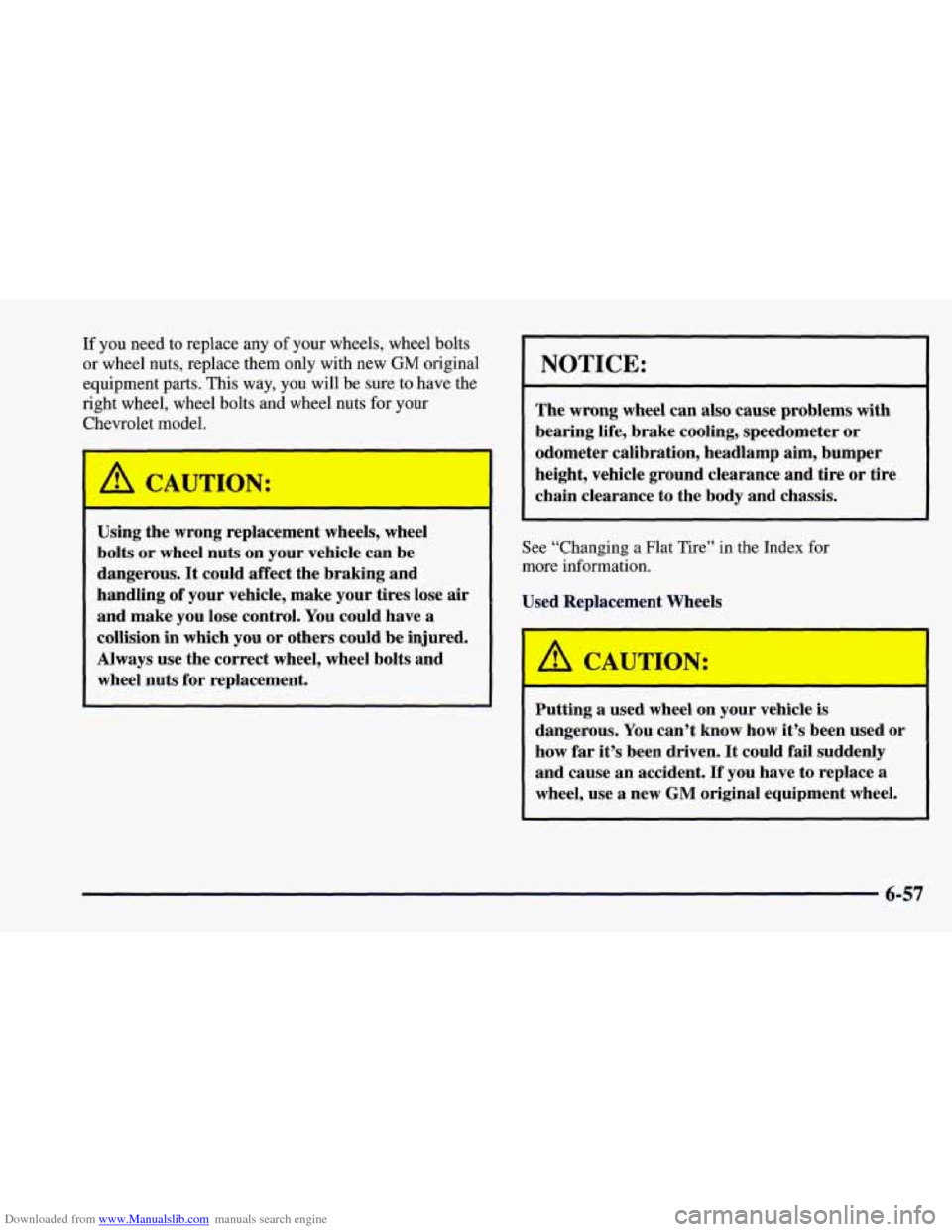Page 284 of 404

Downloaded from www.Manualslib.com manuals search engine Some driving conditions or climates may cause a brake
squeal when the brakes are first applied
or lightly
applied. This does not mean something is wrong with
your brakes.
See “Caliper/Knuckle Maintenance Inspection” in
Section
7 of this manual under Part C “Periodic
Maintenance Inspections.”
If you have rear drum brakes, they don’t have wear
indicators, but if you ever hear a rear brake rubbing
noise, have the rear brake linings inspected. Also, the
rear brake drums should be removed and inspected each
time the tires are removed for rotation or changing.
When
you have the front brakes replaced, have the rear
brakes inspected, too.
Brake linings should always be replaced as complete
axle sets.
See “Brake System Inspection” in Section
7 of this
manual under Part
C “Periodic Maintenance
Inspections”.
Brake Pedal Travel
See your dealer if the brake pedal does not return to
normal height, or if there is a rapid increase in pedal
travel. This could be a sign
of brake trouble.
Brake Adjustment
Every time you make a moderate brake stop, your disc
brakes adjust for wear. If you rarely make a moderate or
heavier stop, then your brakes might not adjust correctly.
If you drive in that way, then
-- very carefully -- make
a few moderate brake stops about every
1,000 miles
(1 600 km), so your brakes will adjust properly.
If your brake pedal goes down farther than normal, your
rear drum brakes may need adjustment. Adjust them by
backing up and firmly applying the brakes a few times.
6-38
Page 303 of 404

Downloaded from www.Manualslib.com manuals search engine If you need to replace any of your wheels, wheel bolts
or wheel nuts, replace them only with new
GM original
equipment parts. This way, you will be sure to have the
right wheel, wheel bolts and wheel nuts for your
Chevrolet model.
Using the wrong replacement wheels, wheel
bolts or wheel nuts on your vehicle can be
dangerous. It could affect the braking and
handling of your vehicle, make your tires lose
air
and make you lose control. You could have a
collision in which you or others could be injured.
Always use the correct wheel, wheel bolts and
wheel nuts for replacement.
NOTICE:
The wrong wheel can also cause problems with
bearing life, brake cooling, speedometer
or
odometer calibration, headlamp aim, bumper
height, vehicle ground clearance and tire or tire
chain clearance to the body and chassis.
See “Changing a Flat Tire” in the Index for
more information.
Used Replacement Wheels
Putting a used wheel on your vehicle
is
dangerous. You can’t know how it’s been used or
how
far it’s been driven. It could fail suddenly
and cause an accident.
If you have to replace a
wheel, use a new GM original equipment wheel.
6-57
Page 322 of 404

Downloaded from www.Manualslib.com manuals search engine Vehicle Dimensions
Length .................. 193.2 inches (49 1 cm)
Width
.................... 74.1 inches (1 89 cm)
Height Wheelbase
.............. 101.1 inches (257 cm)
Front Tread
.............. 60.7 inches (154 cm)
Replacement Parts
Air Cleaner Filter ...................... A1 163C
Battery
................................ 75-60
Engine Oil Filter VIN Engine Code
K .................... PF47
VIN Engine Code P
.................... PF25
Fuel Filter
............................. GF578
PCV Valve VIN Engine Code
K ................. CV892C
VIN Engine Code P
................. CV895C
Radiator Cap
........................... RC24
Spark Plug
VIN Engine Code
K ....... -41-921 (0.060' Gap)
VIN Engine Code P ....... -41-943 (0.050' Gap)
Air Conditioning Refrigerants
Not all air conditioning refrigerants are the same.
If the air conditioning system in
your vehicle needs
refrigerant, be sure the proper refrigerant is used.
If you're not sure, ask your Chevrolet dealer.
6-76